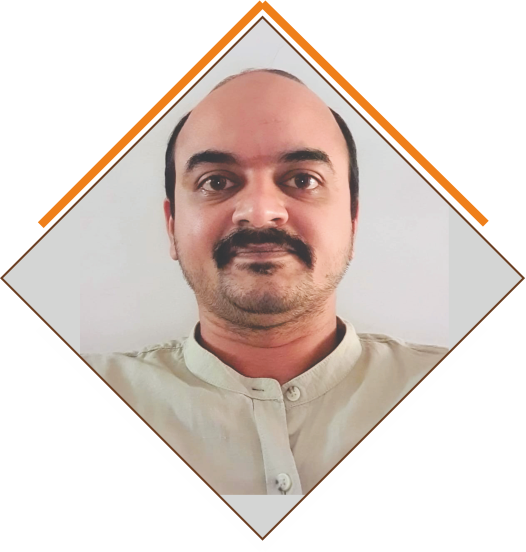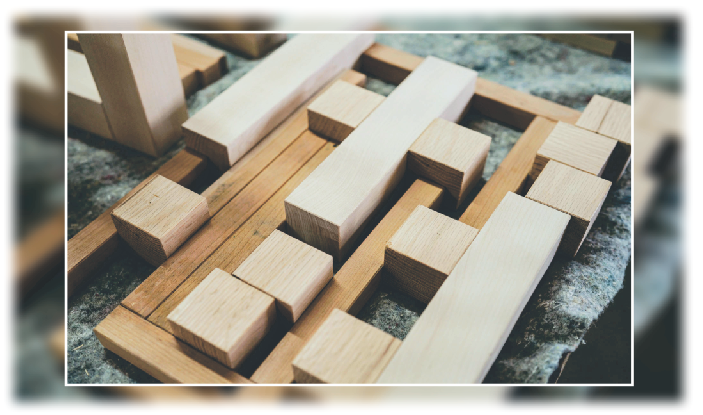
Time to standardise Glue-Mix Charts across all forms of plywood hot-pressing in India
- अप्रैल 8, 2022
- 0
Moving towards defect-free plywood manufacturing in India
Post Covid19, the Indian plywood manufacturing sector is facing disturbances in quality timber, consistency in technical inputs on the floor, and random decisions by semi-experienced technical personnel. Such situations create a lot of pressure on the managements to reduce rejects, improve cost efficiency, and improve product quality in all parameters of market acceptance.
Today, some of the prime concerns facing our plywood manufacturing system are:
- Lack of consistency in day-to-day processes, especially glue-mixing.
- Continuous daily tinkering of glue mixing and processing parameters.
- Semi-experienced floor personnel trying out different things based on peer-discussions & hear-say, leading to wastage of time, energy, resources and faith in the ‘system’.
- Lack of consistency in resin-making and standardisation due to random knowledge and ‘googled’ updates.
- All these leading to higher rejects / lower-grade sheets.
A lot of time, effort, and money is wasted by manufacturers in trying out different things (tinkering/jugaad) and by bringing various ‘experienced consultants’ on to the floor. Temporary solutions may be obtained. Yet, there seems to be no consistency and standardised system-implementation attempted by most smaller factories resulting in further strains in their day-to-day functioning.
As India is attaining increased presence in the global market in many sectors post-Covid19 and due to recent geo-political dynamics, including a much better export outlook for our plywood sector too, it is high time we think of & implement standard resin-making & glue-mixing parameters to create defect-free, globally price competitive products, in addition to our own lucrative domestic market.
Future Focus
In such circumstances and opportunities, our industry’s primary focus should be:
- Increasing dryer output by moving into 15 ± 3% Moisture Content (MC) in core veneers.
- Removing all old thought-processes and prejudices by switching toward high extender (maida/flour) usage.
- Embracing new resin-making techniques and practices to improve bonding in all forms & types of core veneers used in plywood manufacturing.
- Implementing a single standard glue-mixing for all types of resins across all weather conditions.
- Removing unnecessary additives & chemicals with unique claims, from the ‘system’ – such asviscosity enhancers, tackifiers, material replacements etc.
We must understand that standard parameters can never be achieved if we go for ‘adjustment’ chemicals & additives. Science does not work that way, whatever explanations we may cook-up for such temporary actions.
If we have the appropriate catalysts and buffer chemicals during manufacturing of resins, commercial grade resin too does not need a hardener for complete curing. Though hot pressing without hardener is being practiced in some of the units now, the current practice (mainly due to the fear of pre-cure) does not ensure complete curing of the resin and its wet strength properties post production.
भारत में सभी प्रकार के हॉट प्रेसिंग प्लाईवुड पर ग्लू मिक्स चार्ट को मानकीकृत करने का समय आ गया है
भारत में दोष मुक्त प्लाइवुड निर्माण की ओर
Covid 19 के बाद, भारत का प्लाईवुड निर्माण क्षेत्र लकड़ी की गुणवत्ता, फैक्ट्री पर तकनीकी इनपुट में स्थिरता और अनुभवहीन तकनीकी कर्मचारियों द्वारा यादृच्छिक निर्णयों से कई तरह की दिक्कतों का सामना कर रहा है। ऐसी स्थितियां प्रबंधन पर रिजेक्सन को कम करने, लाभप्रदता में सुधार करने और बाजार स्वीकृति के सभी मानकों में उत्पाद की गुणवत्ता में सुधार करने के लिए, बहुत दबाव बनाती हैं।
आज, हमारी प्लाईवुड निर्माण प्रणाली के सामने कुछ मुख्य चिंताएँ हैंः
- दैनिक प्रक्रियाओं में स्थिरता और निरूत्तरता की कमी, विशेष रूप से ग्लू के मिश्रण में।
- प्रोसेसिंग मापदंडों और ग्लू मिश्रण में निरंतर दैनिक फेरबदल होते रहना
- अर्ध-अनुभवी फ्लोर स्टाफ सहकर्मियों से चर्चा और राय के आधार पर विभिन्न नई चीजों को अपनाने की कोशिश करते है, जिससे श्सिस्टमश् में समय, ऊर्जा, संसाधन और विश्वास की बर्बादी होती है।
- यादृच्छिक ज्ञान और ‘‘गूगल’’ अपडेट के कारण ग्लू निर्माण और मानकीकरण में स्थिरता का अभाव।
- इन सबसे अधिक रिजेक्सन/निम्न गुणवत्ता वाली शीट बढ़ जाती है।
निर्माता विभिन्न चीजों में फेलबदल की कोशिश में बहुत समय, प्रयास और पैसा बर्बाद करते हैं और विभिन्न ‘अनुभवी सलाहकारों’ की राय लेते हैं। अस्थायी समाधान तो प्राप्त किया जा सकता है। हालांकि, ऐसा लगता है कि अधिकांश छोटे कारखाने प्रणाली की स्थिरता और मानकीकरण को लागू करने का प्रयास नहीं करते हैं, जिससे उनके दैनिक संचालन पर अधिक दबाव पड़ता है।
जैसा कि भारत कई क्षेत्रों में कोविद -19 के बाद अधिक वैश्विक बाजार में अपनी उपस्थिति दर्ज करवा रहा है और हाल के भू-राजनीतिक गतिशीलता के कारण, हमारे प्लाईवुड क्षेत्र के लिए बेहतर निर्यात दृष्टिकोण सहित, यह उचित समय है जब हम मानक ग्लू निर्माण ग्लू मिश्रण पैरामीटर के बारे में सोचे और इसे लागू करें। और हमारे आकर्षक घरेलू बाजार के अलावा, दोषों के बिना और वैश्विक कीमतों के साथ प्रतिस्पर्धी उत्पादों को बनाने की कोशिस करे।
भविष्य पर नजर
ऐसी परिस्थितियों और अवसरों में, हमारे उद्योग का प्राथमिक फोकस होना चाहिएः
- कोर विनियर को 15 ± 3% मोस्चर (MC) पर स्थानांतरित करके ड्रायर उत्पादन में वृद्धि करें।
- अपने समस्त पूर्वाग्रहो और विचारो से मुक्त होते हुए अधिक Extender (आटा/मैदा) का उपयोग करें
- प्लाईवुड निर्माण में उपयोग किए जाने वाले सभी आकार और प्रकार के कोर विनियर में बॉन्डिंग में सुधार के लिए नई राल निर्माण तकनीकों और प्रथाओं को अपनाएं।
- सभी मौसम स्थितियों में सभी प्रकार के रेजिन के लिए एकल मानक गोंद मिश्रण लागू करें।
- अनावश्यक एडिटिव्स और रसायनों का उन्मूलन, जैसे चिपचिपाहट बढ़ाने वाले, टैकिफायर, सामग्री प्रतिस्थापन, आदि जो दावे के साथ दिये जाते हैं।
हमें यह समझना चाहिए कि यदि हम ‘‘ऐसे Adjustment रसायनों और एडिटिव्स को चुनते हैं तो मानक पैरामीटर कभी हासिल नहीं किए जा सकते हैं। विज्ञान उस तरह से काम नहीं करता है, भले ही हम इस तरह के अस्थायी कार्यों के लिए जो भी स्पष्टीकरण खोज लें।
यदि हमारे पास रेजिन के निर्माण के दौरान उचित उत्प्रेरक और बफर रसायन हैं, तो वाणिज्यिक ग्रेड राल को पूर्ण क्यूरिंग के लिए हार्डनर की आवश्यकता नहीं होती है। हालांकि हार्डनर के बिना होट प्रेसिंग का अभ्यास अब कुछ इकाइयों में किया जाता है, वर्तमान अभ्यास (मुख्य रूप से procure के डर के कारण) उत्पादन के बाद ग्लू और इसकी wet strenght गुणों का पूर्ण curing सुनिश्चित नहीं करता है।
The entire glue-mixing operation should be brought down to just –
Resin + Extender = Good quality glue
This requires standardisation of resin making and its techniques. Once it is mastered by factories, our plywood manufacturing can be effectively made defect-free and stress-free.
Under this standardisation initiative, glue mixing for all resins used in commercial/MR/BWR/BWP products shall be made into one single format, as below:
Resin: 100 PBW (parts by weight)
pH: 7.5 ± 0.2 (Commercial / MR); 9 + (PF/ MPF / MF)
Water Tolerance: Doesn’t apply (As long as the resin flows & is spreadable)
Glue Line Treatments: As recommended by chemical supplier
Extender (Maida/Flour): 25 to 35 PBW
Core veneer MC: 12 to 18%
Glue spread: 30 to 33 GSF (grams per square foot, including wastage)
Prepress Time: 30 minutes (pressure equal to or above hot press pressure)
Hot pressing Temperature: 120 deg C for Commercial/MR; 140* deg C for BWR/BWP
Post hot press conditioning: As needed based on RH (relative humidity) of selling market
*PF resins can be made to cure at faster rates at this temperature, or cure at same rate at lesser temperature (120 deg C) with standard time of curing, using appropriate catalysts.
The above standardisation is practically achievable in Indian conditions across all our climatic zones (a couple of factories are already into this standardisation & stress-free manufacturing), and factories can be made defect-free with very less rejects / lower-grades. It is up to each manufacturer to arrive at these standards of plywood manufacturing systems by adapting quickly to emerging technical trends.
Our countrymen are well-known to adapt to changing needs and mindset very soon. It is wished that we continue in our success of quick learning & adaptability for better overall efficiency (cost, quality & quantity) in our plywood manufacturing sector too. Jai Hind!
उपरोक्त मानकीकरण भारतीय परिस्थितियों में हमारे सभी जलवायु क्षेत्रों में व्यावहारिक रूप से प्राप्त करने योग्य है (कुछ कारखाने पहले से ही इस मानकीकरण और तनाव मुक्त विनिर्माण में हैं), और कारखानों को बहुत कम रिजेक्सन/निम्न ग्रेड के साथ दोष मुक्त बनाया जा सकता है। यह प्रत्येक निर्माता पर निर्भर करता है कि वह उभरते हुए तकनीकी रुझानों को शीघ्रता से अपनाते हुए प्लाईवुड निर्माण प्रणालियों के इन मानकों पर पहुंचे।
हमारे देशवासी बहुत जल्द बदलती जरूरतों और मानसिकता के अनुकूल होने के लिए जाने जाते हैं। यह कामना की जाती है कि हम अपने प्लाईवुड निर्माण क्षेत्र में भी बेहतर समग्र दक्षता (लागत, गुणवत्ता और मात्रा) के लिए त्वरित सीखने और अनुकूलन क्षमता की अपनी सफलता को जारी रखें। जय हिन्द!

































































